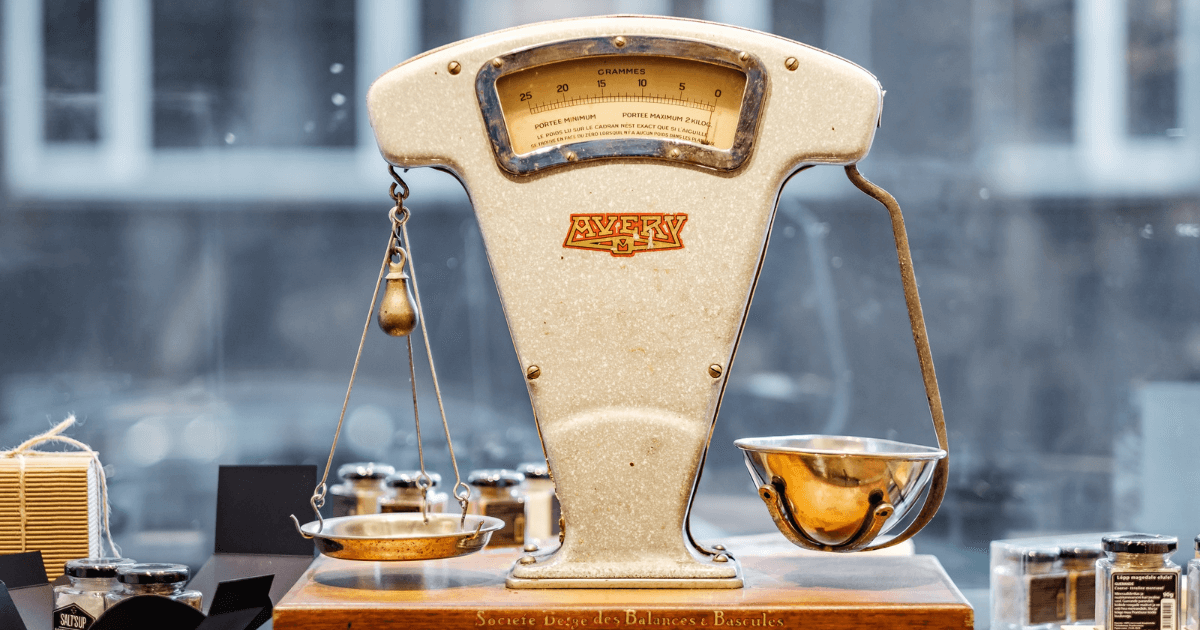I want to dive into a topic that’s increasingly crucial for justifying marketing spend – brand marketing analytics.
Brand marketing can get pushed aside because it's not easy to show its effectiveness right away. But is that really why we need robust brand marketing analytics processes – just to prove brand marketing works?
The straight answer is – yes, absolutely. As a CMO, I've been in countless conversations where we had to quietly lament (to put it nicely) the CFO's lack of understanding of how brand marketing truly pays off long-term.
We analytics professionals view our job as arming CMOs like you with the data to answer that "so what?" question definitively.

The CMO's dilemma: Waste money or get fired?
We've coined the term "the CMO's dilemma" to describe this conundrum – you either waste money on pure performance marketing that doesn't generate new demand, or you invest in brand building and risk getting fired because you can't show the short-term payoff yet.
The research is clear that for most brands, the ideal ratio is a 60/40 split between brand marketing and performance marketing. But good luck telling your CFO you want to spend 60% of the budget on campaigns that won't drive immediate sales!
That's why CMO tenures are often so short – often less than three years, which isn't long enough to see the payoff from brand investments. So as analysts, we have to solve this CMO's dilemma by giving you the data to predict the future impact of your brand-building efforts.
The trouble with attribution modeling
Part of the dilemma comes from over-reliance on simplistic attribution modeling for measuring marketing performance. With brand marketing, you can't just look at who saw an ad and then converted and say "The ad caused that sale!"
Allow me to illustrate with a parable: A pizza store owner tries tracking sales uplift by having kids write their names on coupons to see who drove the most orders. The kid giving out coupons right outside the pizza store racks up the most attributed "sales." But obviously, that kid didn't cause the sales; he just tagged the sales that were already happening.
So, just because someone saw an ad before converting doesn't mean the ad genuinely drove an incremental sale.
That's why for brand marketing analytics, we need to move beyond correlation to truly measuring incremental causal impacts.
Measuring brand marketing’s real impact
So, to measure whether your brand marketing is succeeding and driving real business growth, we typically split the metrics into two buckets:
- Delivery metrics: Verifying your ads actually delivered and reached the right audience. This includes basics like viewability, ad fraud prevention, and targeting.
- Outcome metrics: Demonstrating a tangible impact that leads to increased sales and market share over time. This is where incrementality measurement through experimental design comes in.
For the delivery side, there are great ad verification companies figuring out whether your impressions had a chance to be seen by people in your target segment.
But the real magic happens in measuring outcomes through techniques like running concurrent exposed and control groups, then modeling the conversion impacts while ruling out external factors.

We're bringing cutting-edge techniques from scientific fields like pharmaceutical testing into the brand marketing world. You gather data on exposed audiences and control groups, look for sentiment lifts (e.g. increased brand favorability), and tie that back to eventual sales impacts over time.
This lets you answer questions like "If we increased brand favorability by X% through our latest campaign, what's the predicted boost to our market share six months from now based on historic patterns?"
Then you can definitively show the financial upside of incorporating brand marketing into your strategy.
The full brand marketing payoff cycle
Of course, the consumer journey is rarely as simple as: See an ad > instantly love the brand > immediately purchase the product.
Consumer purchase cycles vary immensely by industry.
For many luxury brands or durables like cars, you could be investing years into marketing efforts before driving eventual sales – the full payoff window can stretch into years. You're not going to see an ad and then walk to the store and buy a Lexus or Rolex, right?
Even CPG brands like cold/flu remedies have to build brand affinity year-round through emotional marketing so they come to mind at the moment of need. And for seemingly simple purchases like soda or snacks, just because the transaction happens weekly doesn't mean your campaign will shift preferences that quickly.
It can take months of brand advertising before someone is nudged to switch from Coke to Pepsi on their next trip to the grocery store.
This is especially common in startup brand building. When you're just trying to get a new product name out there and into consideration sets, you can't realistically expect any individual ad to directly drive purchases right away. The path is a lot more winding, with brand marketing priming the pump first before performance marketing eventually capitalizes.
Following that balanced approach of combining brand/performance marketing is key – and ties back to avoiding the CMO's dilemma. You can't just do 100% performance, because those efforts eventually hit a ceiling without new demand creation. But you also can't be 100% brand without any sales activation.
The right mix is crucial.
Driving direct traffic through brand marketing
I've been so impressed seeing some smart startups and brands adopt this balanced, brand-first mentality from the beginning. Companies like Gong have had explosive growth and won major awards while taking an unabashedly brand-centric approach from the top down.
Having that brand focus baked into the company DNA and senior leadership makes all the difference. It's an uphill battle for a CMO brought in late to an existing performance culture to quickly prove brand marketing's value.
The results speak for themselves though. We've seen so many companies realize that investing in brand marketing is what allows the performance channels to keep delivering – the brand build increases direct traffic, boosts organic engagement, improves paid clickthrough rates, and more.
Even for affiliates and CPC arbitrage businesses, aggressive branding has become essential to combat evaporating margins as Google and other platforms become their biggest funnel competitors.
You simply have to drive more direct site traffic through brand awareness initiatives.
The search bar has become the ultimate test of unaided brand awareness. When customers are literally navigating directly to your site by typing in your brand name, that's powerful confirmation your brand marketing is succeeding at the top of the funnel.
Brands in denial of their own success
It's funny, I've encountered multiple brands that outwardly tout their performance marketing rigor and denial of non-ROI brand efforts. But then when you look under the hood, you realize their growth is almost entirely fueled by amazing branded content, viral videos, immersive storytelling, and other incredible brand marketing tactics that they don't fully acknowledge or quantify.
I've talked to public companies that claim they "Don't do brand marketing" because everything has to directly drive signups or purchases. But then I'll push a bit on things like their sponsorships of sports stadiums, for example – of course, no one is walking into that stadium and immediately converting! It's a long-term brand investment.
Sometimes "brand" gets treated like a dirty word, when in reality, every thriving business has to use world-class brand building, even if they don't call it that formally. Mature companies realize you can't survive on performance marketing alone.
Timescales and sample sizes
If you're just getting started with brand marketing analytics, the timescale is highly dependent on your product category's typical consumer journey.
For luxury goods and automotive where purchase cycles can span years, you'll want to measure brand impacts over multi-year periods.
In more fast-moving consumer categories, while purchasing happens weekly or monthly, you still may need a few months of data to begin seeing brand marketing's impact on sales come to fruition.
As for sample sizes, the general rule is – the more data, the better. You'll want sizable samples for ad exposure tracking, sentiment surveying, and conversion analysis.

For digital ad exposure, you can often get census-level data on impressions. television data, for example, relies more on panel-based modeling, where top providers have panels in millions of households.
Surveys gathering sentiment tend to have smaller sample sizes for reasons of practicality – at the high end, you may be able to cost-effectively survey 10,000 consumers. For a smaller campaign, you can learn a lot even just by interviewing 800 people who were exposed to your ad and 800 people in your control group.
For conversion data, your sample sizes can get quite large again depending on data sources. If you're purchasing third-party retail purchase panel data, that may include millions of consumer participants. Plus, for direct-to-consumer brands, you can track your full conversion funnel naturally.
Driving CFO buy-in
To effectively preach the significance of brand marketing analytics tactics and processes to your CFO and drive buy-in, my recommendation is to leverage the wealth of third-party research and case studies from respected industry voices.
The Advertising Research Foundation (ARF), CIMM, Binet & Field, the VAB, and the ANA all have fantastic free resources that objectively lay out brand marketing's crucial role.
I'd encourage you to browse upwave.com/whitepapers as well to see the latest data-driven guidance we've put together.
At the end of the day, both the empirical data and common sense make it clear – you simply can’t afford to ignore brand marketing if you want to experience sustainable growth. The shiny short-term returns of performance marketing start disintegrating without a steady flow of new demand creation.
Brand marketing analytics allows you to speak your CFO's language of ROI projections and buried metrics while staying true to the fundamentally human nature of brand building.

With these analytics processes, you can quantify the upfront investment needed to unlock long-term sales acceleration. You're measuring and modeling the vital onramps that get customers into the top of your funnel to begin with.
This is how you solve the CMO's dilemma and – hopefully – escape those notoriously short tenures. You're breaking down data silos and validating brand marketing's financial impacts, not just cyclically justifying the same performance channels in perpetuity.
As I've witnessed firsthand, the savviest companies prioritize this balanced, brand-first mentality from day one. They build brand into their core DNA and arm their CMOs with centralized measurement capabilities.
Ultimately, this holistic brand marketing analytics competency is what allows marketing leaders like yourself to play a long game and reap exponential rewards. You're tying each ad dollar to real, sustainable business growth – not just the next quarter's conversions.



 Follow us on LinkedIn
Follow us on LinkedIn




